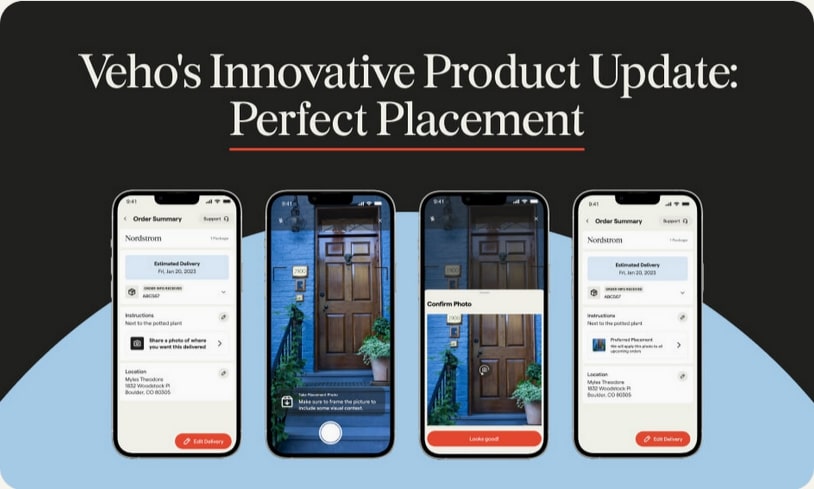Now that we are well into the year, I thought it would be a good idea to review some of the latest emerging retail trends that surely will intensify in the coming months. As is usually the case, these trends are not necessarily new, but we are observing an increase in the rate of adoption – or re-adoption. Let’s get started.
Companies are increasingly focusing on product returns
Every retailer knows that reverse logistics (jargon for product returns) can be a logistical nightmare if not managed properly. It’s no surprise that this segment, often considered the ugly duckling of the shipping industry, has been neglected for years. Well, things are changing fast.
With the acquisition of Happy Returns in 2023, UPS is now able to provide its enterprise retail customers a consolidated returns solution, or as they call it, a “frictionless reverse logistics experience.” Happy Returns aggregates returns and ships them together to facilities that sort and palletize items for bulk shipment back to the retailer.
In addition, UPS recently launched a cross-brand capability for online orders returned to stores as it pursues deals with more enterprise retailers. E-commerce giant Shein is one of the first brands to use the solution, allowing its customers to return their online orders at Forever 21’s more than 300 stores in the continental U.S.
Parcel lockers make a comeback
New research in the UK shows that locker use continues to grow in popularity, becoming the second most popular delivery option after home delivery, the undisputed king by a wide margin.
Convenience (36%), lower cost (19%) and speed (17%) emerge as the top three reasons for choice. Security concerns are also an important consideration for users, with the research showing that one in five consumers have had items go missing from their doorstep. (Source: Talking Retail)
Coincidentally, the same trend is being observed on the other side of the world, although probably not for the same reasons. As logistics professor @Jan Fransoo tells In the chronicle of his recent trip to China:
“It is important to realize that in China today about 2/3 of all parcels are no longer delivered at the doorstep, but to last-mile stations where customers pick up their parcels […]. Those who have visited China, know that most Chinese live in “communities” (groups of several apartment buildings), and each of these communities now would have such a last mile station, often open 24 hours per day.”
Delivery options will continue to expand
In a business as cutthroat and low-margin as e-commerce, retailers are using every tool at their disposal to differentiate themselves. One of them is offering more delivery alternatives.
In fact, the aforementioned study also highlighted that 90% of Gen Zs and Millennial consumers believe that having a variety of delivery options is important to them. By comparison, almost half (48.5%) of consumers the age of 65 considered this “unimportant”.
Because last-mile delivery is the most critical – and most expensive – part of the shipping process, it is where retailers are focusing their energies. Take Amazon’s same-day facilities, or Veho’s new Perfect Placement feature: By allowing customers to upload or text a photo of their preferred placement, along with any additional delivery instructions, the new feature ensures drivers know precisely where to leave packages, preventing potential issues before they happen.
Will this change the face of retail? I don’t think so. But will it take some friction out of the shopping experience? Absolutely.

Carrier price wars are a thing of the past
Unfortunately for retailers, the cost of parcel delivery is expected to continue to rise.
After significant discounting to compete for falling package volumes last year, UPS and FedEx have deployed accessorial charges as more covert tools to increase yields, with changes to fuel, demand and delivery area surcharges targeted to boost revenue.
So, with the carriers’ willingness to offer better discounts seemingly cooled, and with no sign of that changing in the near future, it wouldn’t be a bad idea to take a closer look at your carrier bills. Which brings me to my final point…
Focus on your customers!
From a retail perspective, all major trends are converging on customer-centric business models, where operational processes are designed to make the customer experience as pleasant as possible.
As a retailer, it makes sense to spend most of your time with your customers, not checking carrier invoices or filling out refund forms.
That’s where carrier consultants such a @Betachon Freight Auditing come in. Not only do we audit shipments, but we can help companies get better shipping rates, save money by automating the refund and carrier penalty processes, and provide overall guidance on your shipping strategies.
In short, we take those problems off your plate so you can focus on your business. As my Brand Communications PM likes to say, “We don’t sell lower shipping rates. We sell peace of mind.”
Thanks for reading this far, that’s no small thing these days 😊. And if you’d like a no-strings-attached meeting to discuss shipping strategies for your business, feel free to DM or email me at sales@betachon.com .
